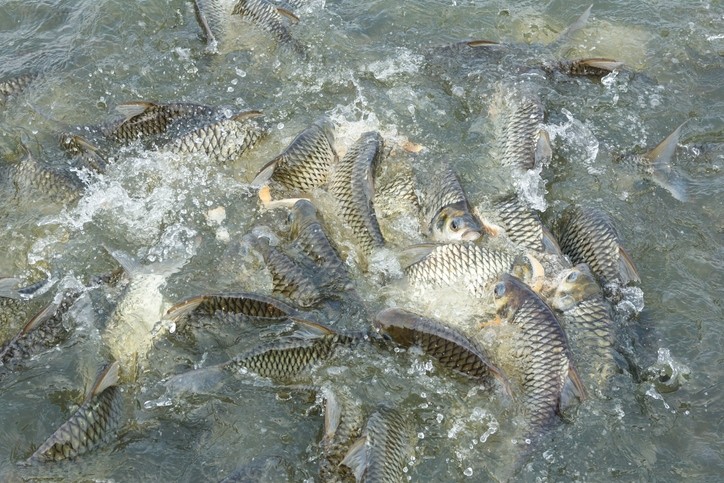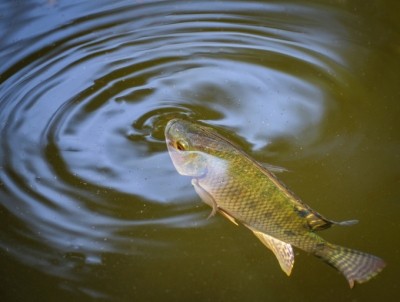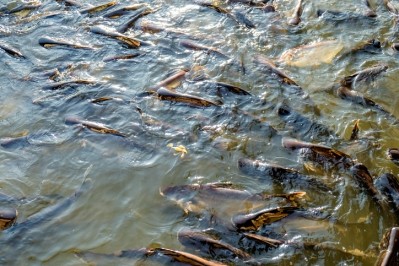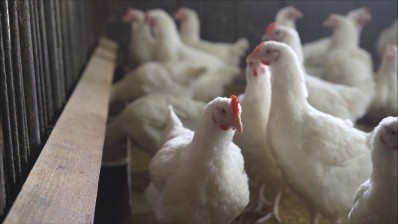Hybrid lemon fin barb see growth, feed efficient boost from dietary carbs

An international group of researchers from Malaysia, Nigeria and the US explored the use of different levels of dietary carbohydrates in the diets of farmed, hybrid lemon fin barb – a tropical carp. The study was published in the journal Aquaculture Reports.
“The present study was conducted to determine the optimal dietary carbohydrate level for this fish based on feed efficiency and growth,” the researchers said. “The whole-body proximate composition, liver glycogen and intestinal short-chain fatty acids of the fish were also measured to better understand the role of dietary carbohydrate in this tropical carp.”
The researchers found that fish survival remained the same regardless of diet, but that specific growth rate, weight gain, and protein efficiency ratio improved as a higher level of dietary carbohydrate was used.
Whole-body crude lipid increased in fish on the higher carbohydrate diet, but the body carbohydrate level fell, they said. Intestinal butyric acid was similar regardless of diet, but acetic acid and propionic acid increased for fish on the diet with 35-40% starch.
Liver glycogen content was smaller for fish receiving feed with a lower dietary carbohydrate level, they said.
“Juvenile hybrid lemon fin barb optimally required 33.5% carbohydrate in its diet for the best growth and feed efficiency,” the researchers said. “Nevertheless, a practical diet containing 30–35% carbohydrate was recommended for the culture of this hybrid.”
“A diet containing more than 35% digestible carbohydrate depressed the fish growth and might affect the fish liver in a long-term feeding,” they added.
Carbohydrate use in aquaculture diets
In aquafeeds, carbohydrates provide a cheap source of energy but there can be a challenge in providing the correct balance of carbohydrates and lipids needed to meet energy requirements and provide necessary protein, the researchers said.
The use of carbohydrates in fish feed pellets may support pellet quality, provide a lipid-sparing effect along with protein and needed components of body metabolites, they said. The use of non-protein energy sources can vary by species and is incompletely understood.
“As such no dietary energy requirement for carbohydrate has been established in many farmed fish,” they added.
Species ability to metabolize and digest carbohydrates tends to depend on the source and inclusion levels and alters by species, the researchers said.
“In general, omnivorous and herbivorous fish have the tendency to utilize carbohydrates better than carnivorous fish,” they said. “Understanding the ability of the fish species in utilizing carbohydrate is the basis for appropriate formulation of affordable aquafeeds.”
However, the use of carbohydrates in aquafeeds also depends on the processing, feeding type, behavior and complexity of the carbohydrate, they said. Proving a “suitable carbohydrate level” can boost fish growth and reduce feeding costs but adding incorrect amounts may inhibit nutrient assimilation and growth rate.
“In addition, physiological disorders like hyperglycemia and damaged fish liver can also occur,” they added.
What are the optimal nutrition levels for hybrid lemon fin barb?
Hybrid lemon fin barb is a type of tropical carp generated by crossing female silver barb with male lemon fin barb, the researchers said.
“This hybrid shows a high potential for large scale commercial freshwater fish farming in the tropical countries due to their fast-growing characteristic inherited from the silver barb, matures and can be bred easily in captivity, and tolerates a broad range of environmental parameters and others.”
The fish generates a price premium compared to silver barb and gains 500-600g in body weight in a 5 to 7-month period, they said. Annual production has increased by more than “six folds” from the initial introduction, they said.
“To date, no specific feed has been developed for this hybrid,” they said. “In practice, farmers feed the hybrid with tilapia or catfish commercial pellets and supplemented with napier grass or aquatic plant cuttings to reduce the feeding cost.”
Previous research found that the fish can eat several kinds of leaf meal and established optimal dietary protein and lipid requirements, they said. “The role of carbohydrate in the nutrition of hybrid lemon fin barb, however, has not been established,” they added.
Feeding trial details
During the feeding trial 300 juvenile hybrid fish received one of five diets with differing carbohydrate levels for a period of 60 days, the researchers said.
The diets included increasing levels of tapioca starch as a carbohydrate source at 20, 25, 30, 35 and 40%, they said. Diets also contained fishmeal, vitamins, and crude palm oil and were pelleted and crumbled before use.
Fish were measured at the start and end of the feeding trial to assess the total length and final body weight, they said. The specific growth rate (SGR) for weight and length was calculated as was weight gain.
A selection of fish on each diet was collected to gather the liver and intestine to establish the hepatosomatic index (HSI) and viserosomatic index (VSI), they said. Whole-body proximate composition was checked at the start and end of the trial and short-chain fatty acids present in the fish were assessed.
Results
No mortality was noted during the feeding trial and diets were well received by the fish, the researchers said.
Fish on the diet with 35% carbohydrate had the best growth and FCR, and the protein efficiency ratio (PER) was the best for fish on the diets with 30 and 35% carbohydrates, they said.
“From the second-order polynomial regression analysis on percentage weight gain, an optimal dietary carbohydrate level of 33.5% was estimated for the hybrid,” they added.
Adding increasing levels of carbohydrates to fish diets did not significantly change the body composition expect for lipid and nitrogen-free extract (NFE), they said.
“Increasing dietary carbohydrate level to 30% and more significantly increased whole-body crude lipid and decreased body NFE,” they added.
“The protein, carbohydrate, lipid and energy retention of hybrid juveniles were significantly affected by the dietary carbohydrate level,” they said.
Lipid retention increased as more carbohydrate was added to the diet, protein retention was highest with the 35% carbohydrate diet, carbohydrate retention was highest with the 25% diet, and energy retention was lowest with the 20% diet.
The highest level of intestinal short-chain fatty acids was for acetic acid, followed by propionic and butyric acids, the researchers said.
“The maximum amount of intestinal acetic acid was observed among fish fed 35% carbohydrate that was significantly higher than those fed 20% carbohydrate,” they said. “Meanwhile, hybrid fed 35–40% carbohydrate had significantly higher propionic acid than those fed 20–25% carbohydrate. No significant difference among treatments was found for intestinal butyric acid.”
Fish livers looked normal, but glycogen content and lipid vacuolization increased as higher levels of carbohydrates were added to the feeds, they said.
Source: Aquaculture Reports
DOI: published online before print: doi.org/10.1016/j.aqrep.2019.100250
Title: Effects of increasing dietary carbohydrate level on feed utilization, body composition, liver glycogen, and intestinal short-chain fatty acids of hybrid lemon fin barb (Barbonymus gonionotus X Hypsibarbus wetmorei male)
Authors: M.A. Sulaiman, M.S. Kamarudin, N. Romano, F. Syukri












